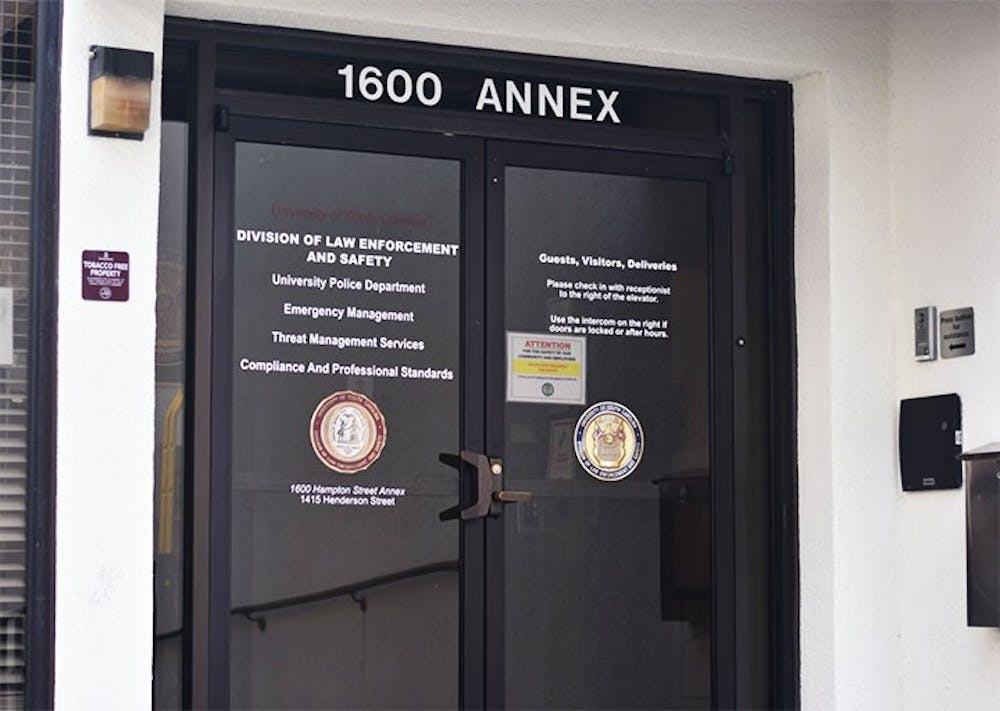The USCPD released a bulletin stating that it, and other law enforcement agencies, had “seized heroin and other illegal drugs that had been laced with Fentanyl and other substances" on Aug. 27.
Substance abuse is a serious matter, and drugs with the risk of laced substances are dangerous to everyone, including college students. With combined effort from the university and our community, we can ensure substance abuse is treated with compassion and diligence.
It’s not ideal, but substance abuse occurs everywhere, even on our college campus. Prescription drugs are increasingly popular. Empathy for those struggling with addiction is vital in lowering the rate of substance abuse, especially with how prevalent it can be on campuses.
“Nearly 12 percent of college students reported using one or more types of prescription drugs (including antidepressants, sedatives, and stimulants) that were not prescribed to them within the last 12 months,” according to the U.S. Drug Enforcement Administration.
Abusing non-prescribed medication is already dangerous — It leads to addiction and various dangerous physical and emotional symptoms, such as anxiety, paranoia, irregular heartbeat and more. Addiction is a disease, a substance abuse disorder. Even with drug abuse's status as illegal, its treatment needs to be focused on the healing of those involved.
This danger is heightened when these illegal drugs are laced, or made to appear as another substance. Not getting what you paid for is always disappointing, but in this scenario, people are paying with their lives.
Laced substances aren’t limited to college campuses. In fact, street drugs are becoming increasingly deadly. Fentanyl laced cocaine has killed many across the country, and these deaths often happen within the same towns, counties and cities. Little pockets of tragedy caused by faulty drug batches.
When faced with tragedy and loss, we must take action and find ways to prevent further injury and death.
Harm-reduction is one of the first things to consider. Testing kits and revival medications have saved lives and given those struggling with addiction a second chance. Organizations like the National Harm Reduction Coalition provides resources to receive Fentanyl testing strips and resources on the effects of addiction and overdoses.
Having resources such as this on campus would mean rapid, life-saving measures could be secured for those with substance abuse disorders. It's difficult to break an addiction, so harm-reduction services can ensure less deaths while on the road to recovery.
USC also has multiple resources for those struggling with substance abuse and their loved ones.
The Substance Abuse Prevention and Education Program, also known as SAPE, covers a variety of subjects. They have educational programs and information for students, and intervention programs to treat students with substance abuse.
The Students Taking Initiative and Responsibility or STIR program is run by SAPE to allow students to self asses their relationship with substances and have one-on-one confidential meetings with a counselor to create a healthier lifestyle. Students can volunteer for the program themselves, or a concerned loved one can offer a referral. I believe students should take advantage of these programs. They are available specifically for students to receive care and support during a very difficult ordeal.
SAPE works with every step of healing from substance abuse. As well as the intervention program previously listed, they also have a recovery program that includes support meetings, coaching and workshops.
SAPE’s presence on our campus is promising for the future of treating and aiding those struggling with substance abuse. But only if students take advantage of it.
Empathy and patience are crucial factors in prevention and support in situations of addiction. We need campus programs and resources.
Introducing services, such as harm-reduction services, would ensure even more safeguards for students. Community programs break down stigma associated with addiction and give options that are located near those struggling.
Knowledge is also key in treating the spread of substance abuse. The USCPD’s use of community warnings make us aware of happenings within our university, our peers. Being informed is always valuable.
Because using controlled substances without a prescription is illegal, there will always be an element of law enforcement if you are caught with these types of substances. Keeping the community safe and away from harm is the USCPD’s main focus. Student's should see the department as another resource, instead of simply a way to get in trouble with the law. The officers care about your safety just as much as the other organizations on campus do.
“We have strong partnerships with other resources on campus, like SAPE, like the counseling center, just to name a few. So, our goal is to get whatever resource to a student, or whomever for that matter, might be struggling with an addiction, might be struggling with a mental health issue, to the right source,” Captain Eric Grabski of the USCPD said.
USCPD works firsthand in the prevention of substance abuse on campus and is focused on informing the community of the danger of abusing illicit substances.
An important thing to note is that USC has a Good Samaritan Policy, also known as the Medical Overdose Treatment Policy. Its implementation is used to encourage students to seek assistance for their fellow peers without fear of disciplinary sanctions. Instead, they receive educational and support services afterward.
“Our job isn't just to write a ticket, isn’t just to file a criminal charge, isn't just to take someone to jail. Our focus is on helping and keeping people safe” Grabski said.
Policies, programs and resources like these mean that substance abuse care and prevention is possible on campuses everywhere.

